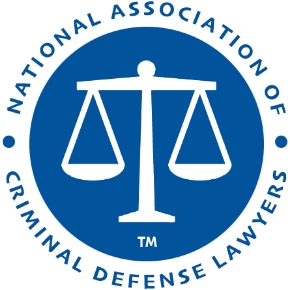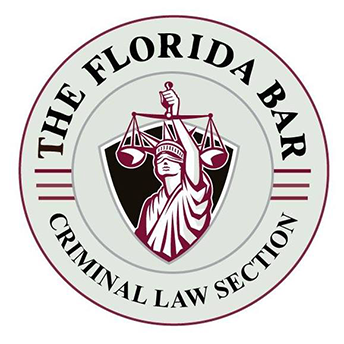Threat Against a Public Official
Florida Statute Section 836.12 prohibits a person from threatening any of the following people with death or serious bodily harm:
- a law enforcement officer;
- a state attorney;
- an assistant state attorney;
- a firefighter;
- a judge;
- an elected official;
- or a family member of any such person.
A first offense is a first degree misdemeanor punishable by up to twelve (12) months in jail or on probation and a $1,000 fine. A second offense is punishable as a third degree felony punishable by up to five (5) years in prison.
Attorney for Crimes Involving Threatening a Public Official
The attorneys at Sammis Law Firm represent clients throughout the greater Tampa Bay area. Prosecutors treat crimes for making threats against public officials and their families very seriously. The prosecutions are often politically charged and garner media attention.
We are experienced in fighting these charges and related offenses. Our main office is located in downtown Tampa, FL. We also have offices in Clearwater in Pinellas County and New Port Richy in Pasco County.
Contact us to discuss the case, the penalties typically imposed, and the best ways to fight the charges for an outright dismissal.
Call 813-250-0500
Standard Jury Instructions for Threatening a Public Official
One of the best ways to understand a criminal statute is to read the standard jury instructions for that criminal offense.
The standard jury instructions for crimes charged under Section 836.12, F.S., were first adopted in 2017 [217 So. 3d 965] and last amended on April 5, 2021, and January 7, 2022. This standard jury instruction can be found Chapter 8.22(a) and provides:
To prove the crime of Threat to [Kill] [Do Serious Bodily Harm to] a [Public Official] [Family Member of a Public Official], the State must prove the following three elements beyond a reasonable doubt:
- (Defendant) threatened to [kill] [do serious bodily harm to] (person receiving threat).
- At the time, (person receiving threat) was a[n] [family member of a[n]] [law enforcement officer] [state attorney] [assistant state attorney] [firefighter] [judge] [elected official].
- (Defendant) knew (victim) was a[n] [family member of a[n]] [law enforcement officer] [state attorney] [assistant state attorney] [firefighter] [judge] [elected official].
The term “threatened” means to communicate, by word or act, a serious expression of an intent to commit an act of unlawful violence to a particular individual.
The term “family member” means:
- An individual related to another individual by blood or marriage; or
- An individual who stands in loco parentis to another individual or in place of a parent.
The term “law enforcement officer” means any person:
- who is elected, appointed, or employed full-time by any municipality or the state or any political subdivision thereof;
- who is vested with the authority to bear arms and make arrests; and
- whose primary responsibility is preventing and detecting crime or enforcing Florida’s penal, criminal, traffic, or highway laws.
The definition also includes part-time and auxiliary law enforcement officers. In that context, the term “law enforcement officer” includes”
- all certified supervisory and command personnel whose duties include, in whole or in part, the supervision, training, guidance, and management responsibilities of full-time law enforcement officers, part-time law enforcement officers, or auxiliary law enforcement officers;
- but does not include support personnel employed by the employing agency.
Finally, the term “law enforcement officer” also includes a person who:
- is employed by the Federal Government as a full-time law enforcement officer as defined by federal law;
- is empowered to effect an arrest for violations of the United States Code;
- is authorized to carry firearms in the performance of her or his duties; and
- has received law enforcement training equivalent to that prescribed for state law enforcement officers.
The term “firefighter” means an individual who holds a current and valid Firefighter Certificate of Compliance or Special Certificate of Compliance issued by the Division of State Fire Marshal under Florida law.
Although there are no lesser included offenses, related offenses might include assault on a law enforcement officer under Section 784.07(2)(a), or assault under Section 784.011.
Related charges include making a written threat to kill or do bodily injury, which requires that the threat is communicated to the alleged victim in writing. Under Florida Statute Section 826.10, this crime is punishable as a second-degree felony by up to fifteen (15) years in prison.
Bifurcated Proceeds for a Second Offense of Threatening
Sometimes a prior violation is not treated as a recidivist fact that can be proven to a judge at sentencing.
If the prior violation is an element of the felony crime, the court commits an error by informing the jury of that prior violation until the verdict on the underlying crime is rendered.
For this reason, if the charging document (called an “information” or “indictment”) contains an allegation of a prior violation, that allegation must not be read to the jury before the verdict. The court must not give the jurors the information or indictment before the verdict is rendered.
As explained in State v. Harbaugh, 754 So. 2d 691 (Fla. 2000), if the defendant is found guilty of threatening a public official or their family, the historical fact of a prior violation shall be determined separately by the jury in a bifurcated proceeding.
In those cases, the jury is told:
Now that you have found the defendant guilty of Threat to [Kill] [Do Serious Bodily Harm to] a [Public Official] [Family Member of a Public Official], you must further determine whether the State has proven beyond a reasonable doubt that the defendant was previously convicted of the same crime.
In this context, “conviction” means “a determination of guilt which is the result of a plea or a trial, regardless of whether adjudication is withheld or a plea of nolo contendere is entered.”
This article was last updated on Wednesday, April 12, 2023.














